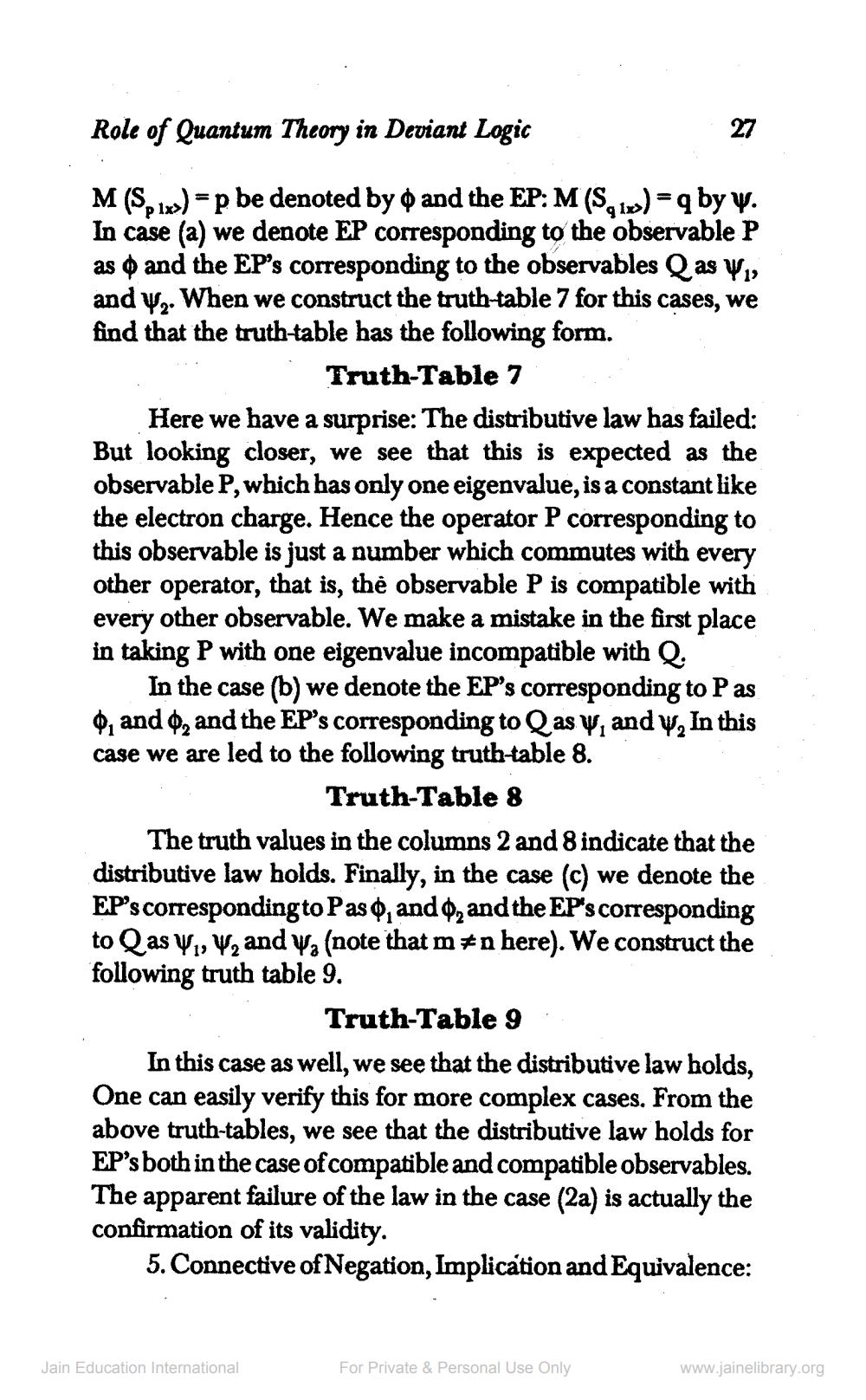________________
Role of Quantum Theory in Deviant Logic
M (Spx)=p be denoted by and the EP: M (S) = q by w. In case (a) we denote EP corresponding to the observable P as and the EP's corresponding to the observables Qas y1, and y2. When we construct the truth-table 7 for this cases, we find that the truth-table has the following form.
Truth-Table 7
Here we have a surprise: The distributive law has failed: But looking closer, we see that this is expected as the observable P, which has only one eigenvalue, is a constant like the electron charge. Hence the operator P corresponding to this observable is just a number which commutes with every other operator, that is, the observable P is compatible with every other observable. We make a mistake in the first place in taking P with one eigenvalue incompatible with Q
In the case (b) we denote the EP's corresponding to P as , and, and the EP's corresponding to Qas w, and w2 In this case we are led to the following truth-table 8.
Truth-Table 8
27
The truth values in the columns 2 and 8 indicate that the distributive law holds. Finally, in the case (c) we denote the EP's corresponding to Paso, and 4, and the EP's corresponding to Qas y1, V2 and w2 (note that men here). We construct the following truth table 9.
Truth-Table 9
In this case as well, we see that the distributive law holds, One can easily verify this for more complex cases. From the above truth-tables, we see that the distributive law holds for EP's both in the case of compatible and compatible observables. The apparent failure of the law in the case (2a) is actually the confirmation of its validity.
5. Connective of Negation, Implication and Equivalence:
Jain Education International
For Private & Personal Use Only
www.jainelibrary.org




